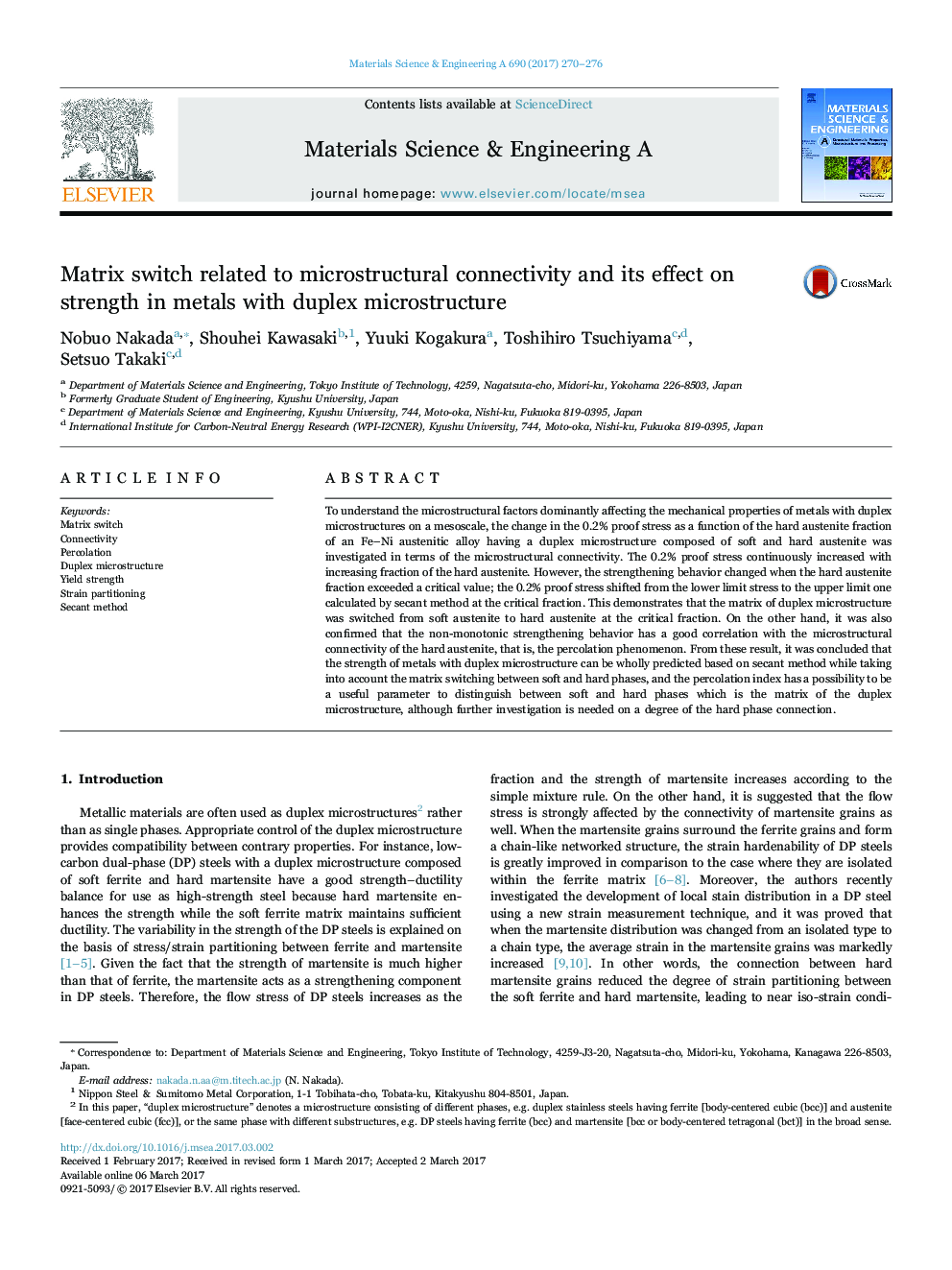| Article ID | Journal | Published Year | Pages | File Type |
|---|---|---|---|---|
| 5455955 | Materials Science and Engineering: A | 2017 | 7 Pages |
Abstract
To understand the microstructural factors dominantly affecting the mechanical properties of metals with duplex microstructures on a mesoscale, the change in the 0.2% proof stress as a function of the hard austenite fraction of an Fe-Ni austenitic alloy having a duplex microstructure composed of soft and hard austenite was investigated in terms of the microstructural connectivity. The 0.2% proof stress continuously increased with increasing fraction of the hard austenite. However, the strengthening behavior changed when the hard austenite fraction exceeded a critical value; the 0.2% proof stress shifted from the lower limit stress to the upper limit one calculated by secant method at the critical fraction. This demonstrates that the matrix of duplex microstructure was switched from soft austenite to hard austenite at the critical fraction. On the other hand, it was also confirmed that the non-monotonic strengthening behavior has a good correlation with the microstructural connectivity of the hard austenite, that is, the percolation phenomenon. From these result, it was concluded that the strength of metals with duplex microstructure can be wholly predicted based on secant method while taking into account the matrix switching between soft and hard phases, and the percolation index has a possibility to be a useful parameter to distinguish between soft and hard phases which is the matrix of the duplex microstructure, although further investigation is needed on a degree of the hard phase connection.
Related Topics
Physical Sciences and Engineering
Materials Science
Materials Science (General)
Authors
Nobuo Nakada, Shouhei Kawasaki, Yuuki Kogakura, Toshihiro Tsuchiyama, Setsuo Takaki,
